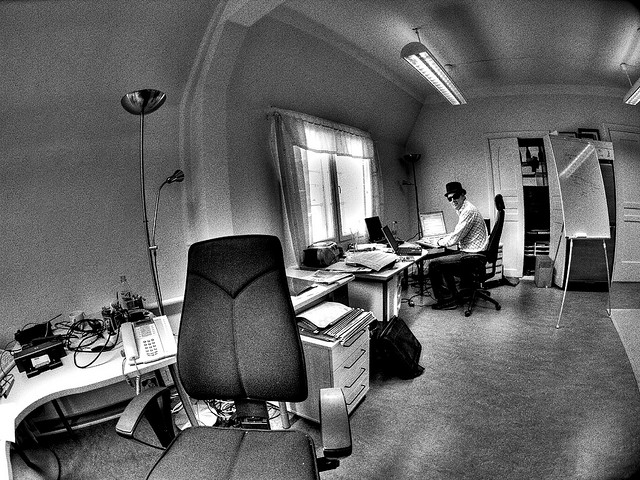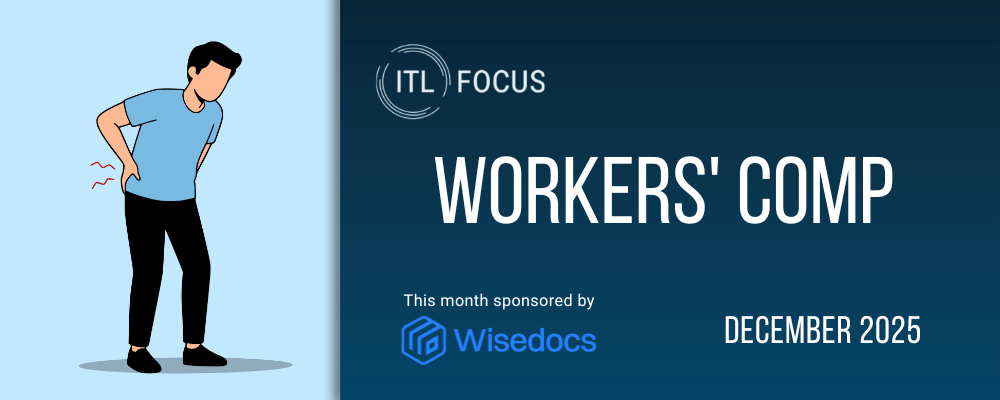The working world is changing. Even before the COVID-19 pandemic, remote work was gaining popularity as employees sought greater flexibility and as advances in telecommuting removed barriers. Some employers even offered work-from-home options as an incentive to attract and retain top talent, save money and sharpen their competitive edge.
Since the pandemic, remote work has become a fact of life, and, like it or not, it’s here to stay. Even with vaccinations on the rise and many watching the horizon for a return to “normal” — or to the office — many workers will never return to a physical worksite. Employers who acknowledge the shift are developing and implementing plans to provide continued work-from-home options.
But what does this change mean for your organization when a worker gets hurt on the job?
It may seem that working from home would provide employees with a safe environment and low risk of injury, but, in truth, employers won’t always know what specific hazards exist in every worker’s home. The reality is that injuries occur all the time in any environment, at home just as they do in a conventional workplace.
Evaluate
Workers’ compensation claims for injuries sustained in the home can and should be evaluated the same as any other industrial claim — but they still present their own unique challenges. While every state has its own laws and interpretations, compensable claims generally have these things in common: the injury must be work-related; it must have occurred in the course and scope of employment; and the injury or accident must arise out of job-related activities. A proper investigation can provide the details needed to make an accurate determination and ensure the appropriate benefits are administered.
There is no requirement that an injury must occur at a place of employment outside the home — such as a worksite, factory, warehouse or office — for a workers’ compensation claim to be compensable. What is required is to establish whether it arose out of employment (AOE) or the course of employment (COE). The goal of a compensability investigation is to establish if the reported injury occurred, if it occurred in the course and scope of employment or if it was non-industrial.
See also: Pressure to Innovate Shifts Priorities
AOE/COE Compensability Determination
To be eligible to receive workers’ compensation benefits — including medical treatments, disability benefits, vocational rehabilitation and death benefits — an injury or illness must have arisen out of employment (AOE) and occurred during the course of employment (COE).
As a general rule, if an employee deviates from work activities benefiting their employer to activities for a personal benefit, any injury occurring during such deviation is generally not considered within the course and scope of employment and is therefore not covered. But once the employee returns from the deviation to work-related tasks for the benefit of the business, any injury that occurs after that point is typically covered.
However, there are nuances when considering the work-from-home environment. Take lunch, for example. When an employee leaves the office for lunch, compensability is typically more straightforward for injuries sustained while away from the workplace. But when an at-home employee trips and falls while walking to the refrigerator for lunch, the question may be somewhat less clear-cut.
Investigative Solutions
It is crucial to conduct an investigation early on in any claim to document the facts, gather/secure any potential evidence and identify any potential third-party liability. The investigation will seek to determine if an accident or incident occurred, if an injury was sustained, whether anything unusual or unexpected occurred and whether the incident caused or aggravated a medical condition.
While an accident at a job site or office may benefit from reliable witnesses or security footage, at-home employees are often working alone and unsupervised. This means injury incidents often occur without reliable witnesses to corroborate accounts.
Recorded Statement
Obtaining recorded statements is a key technique for thorough remote injury investigations. At-home injuries are often unwitnessed (or potential witnesses are likely family members), so investigators will assess the credibility of the claimant and any witnesses and secure their recorded statements. Investigations must rely heavily on claimant and witness statements bolstered by medical records, scene inspections and other investigative solutions.
Here are some critical details an investigator will verify:
- The time and date of the incident
- Whether the incident occurred within the employee’s routine working hours
- The activity that preceded the injury
- Exactly what work was being done at the time of the injury
- The mechanism and nature of the injury
- Medical history and claim history
Confirming when the in-home worker took breaks and other corresponding details about their daily routine are also important pieces. In addition to determining whether the employee was legitimately working for the employer at the time of the injury, investigators will inquire further to ascertain if the employee was solely engaged in work-related activities or if there were any other activity or distractions involved. If a reported injury arose from playing with the dog between calls or consuming alcohol while listening to a training, these may be valid reasons to deny the claim.
See also: Long-Haul COVID-19 Claims and WC
Subrogation Investigation
Subrogation potential can also be complicated with a remote employee injury. What if your employee’s injury was caused by a roommate or landlord negligence? Or, imagine that a claimant reports she sustained an injury at her home workstation as a result of a broken chair. It’s then essential to obtain all needed information about the chair, any prior complaints or defects, litigation involving the manufacturer and other facts required for a potential subrogation claim.
Make a Plan
Create policies and procedures specific to your telecommuting employees. Work-from-home agreements can help ensure everyone understands expectations around creating a safe environment and guidelines for the reporting of an injury and the investigation of a claim.








